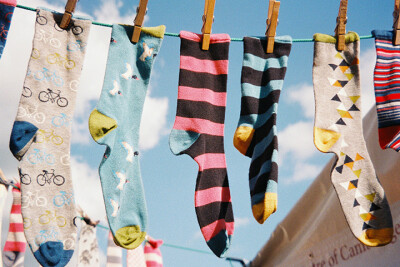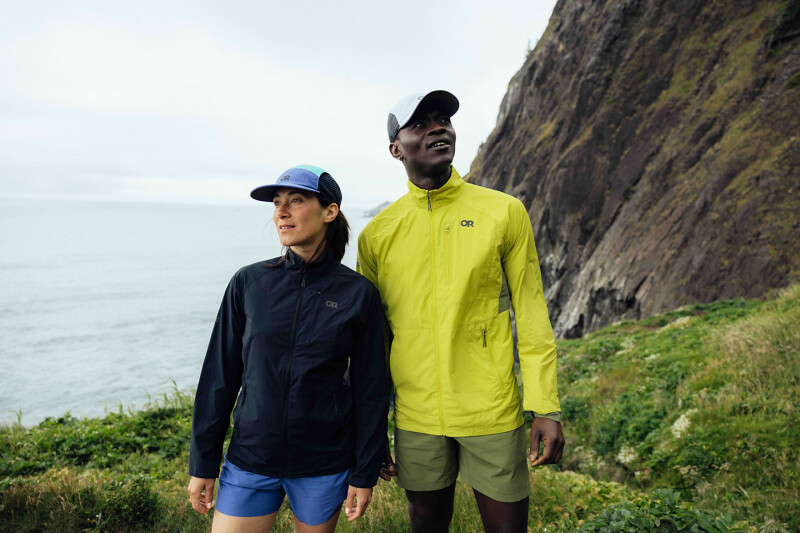I’d be willing to bet that most folks reading this article have no idea how many pairs of socks they own. I certainly did not, but more on that later. First, a bit of a history lesson on this basic, yet essential, apparel product.
The first socks were made from matted animal hair and were called piloi. The origin of socks dates back to the Eighth Century BC in ancient Greece. Thankfully, we have come a long way since then.
There wasn’t much of a change in socks until the Second Century (AD). Animal skins were replaced with knitted fabrics creating socks that bore a greater resemblance to the ones we wear today. The Romans were the first to sew fabrics together to make what were known as udones. These were softer and more fitted than their predecessors. It wasn’t until the Firth Century that socks made their way to Europe. By then, they were called puttees and were considered a symbol of purity. As such, they were reserved for those associated with the Church. Originally called stockings, the word sock actually comes from the English word socc, meaning light slipper, both words derived from the Latin root word, soccus.
Not surprisingly, socks were originally intended for protection from the elements. It wasn’t until the Middle Ages that socks in bright colors began to be worn as a fashion accessory. It is interesting to note that originally stopping at the ankle, socks now got higher as pants grew shorter, as was the rage in those days.
As the demand for socks began to rise, so did their prices. Socks became so expensive that they were worn mostly by noble families who were able to afford them. Anyone wearing socks back then was immediately associated with the upper class. So much for history.
Here’s a look at the sock market today and what experts expect going forward.
• The major materials dominating the market are divided by cotton, wool, nylon, polyester and a few other fabrications such as cashmere.
• Of those, cotton accounted for nearly 45 percent of all sales according to the latest data available (2021) and is expected to continue.
• Jasan, based in China, is the world’s largest manufacturer of cotton socks, producing an estimated 400 million pair annually and employing 8000 people. Given that, it may come as little surprise to learn that 90 percent of the world’s socks are manufactured in China.
• Closer to home, the U.S. sock market, with sales approaching $8 billion, is expected to grow at a rate of 6.4 percent from now until 2030. The industry breaks socks down into four major classifications, ankle, no-show, crew and knee-high. Of those, ankle and no-show socks are expected to outperform the others. This makes sense given the increasing trend of athletic socks. With today’s emphasis on health and fitness and customers’ increasing awareness of higher quality socks for workouts and outdoor sports activities (running, hiking, pickleball, golf), the opportunities for retailers to capitalize on this market segment are outstanding.
Nice Margins, Small Commitment
The attractive margins, relatively small square footage commitment and turnover potential that characterize the sock business all spell positives for specialty stores. According to Adam Hambleton, planning manager at Management One, the average initial markup for their more than 200 retail clients polled was 56.5 percent. Markdowns amounted to 8.8 percent and year-over-year sales for 2022 were up 3.3 percent.
Further breaking the sales percentages down by month reveals that 44 percent of annual volume was generated in the fourth quarter of the year, with October contributing 9.4 percent, November 13.3 percent and December at 21.9 percent. The remaining months of January-September all averaged about six percent.
The M1 data also reveal a relatively conservative inventory turnover of 2.4 as well as a somewhat shy percentage of total store revenue coming in at a mere 1.8 percent. Both metrics indicate a substantial upside could be achievable in the sock classification when given the attention deserved. Three retailers prove this point:
• Data provided to me by Matt Lucas, accessories buyer at Karavel Shoes, which has one location in Austin, TX (home of The Running Event!!!), demonstrates the upside potential of the classification if managed efficiently. Socks make up 3.7 percent of total company sales, have an annual turnover of 3.3 times, a maintained markup of 55.4 percent and experienced a sales increase of 7.2 percent in 2022 with the seven main vendors he carries.
• Meredyth Melcher, operations director for The Running Well Store, a three-unit retailer based in Kansas City, MO, reports that socks generate an impressive “7-10 percent of total company sales during a given year,” demonstrating the power of suggestive selling. Her six major vendors turn 2.3X overall, but the larger brands have turn rates approaching 3.5X.
• Heyday, a very successful home and gift store in the upscale resort town of Bozeman, MT, reported a 2022 sales increase in its sock classification of 29 percent. Complementing the nice increase was an astonishing inventory turnover of 5.9 times, all of which coming from novelty offerings, begging the question of possible supply chain issues and/or inconsistent reorders.
Rely on Your Vendors
These successful specialty retailers recognize the GMROI potential of the sock department and aggressively promote by taking advantage of available vendor programs. And vendors of all shapes and sizes are ready and willing to help out.
According to John Gaither, CEO of Feetures, a premium performance brand carried in many shoe stores and run specialty shops, the selling process begins with staff education.
“Performance socks provide an opportunity to enhance the consumer experience and help drive incremental sales at healthy margins,” he says, a message that their sales reps will be consistently delivering in the coming year. As part of Feetures commitment to the retailer, try-on socks are provided, complimentary socks for staff and activation programs developed to help engage the retailer’s core consumers are part of the assistance offered at the vendor level.
Other merchandising ideas retailers use to drive sales in the sock class include the use of B3G1F (Buy 3, Get 1 Free) promotions with vendor assistance provided by way of discounts, sale bins of close outs and various sales contests and incentives for associates.
How Many Socks In Your Drawer?
So to get back to my original question about how many socks an individual owns, just for fun I conducted my own informal survey of friends, family members, business associates and neighbors to find out how many socks they own. The random sample consisted of 27 men and 17 women.
Big surprise number one: It is well accepted that women buy more clothes than men, but not socks. I found it common for men to own over two-and-a-half times more socks than women.
Big surprise number two: The men informally surveyed owned an average of 67 (!) pairs of socks, while women had only 25 pairs. The counts ranged from a low of four (not a misprint) to a mind-blowing 336 pairs owned by a former professional basketball player, which may account for a good portion of his drawer-busting inventory.
Not big surprise number one: Most folks only wear a small percentage of the socks they own, myself included.
How many pairs of socks do you own? Why not conduct your own survey of friends and staff and see if your results mirror mine. Depending on your outcome, assortment modifications could be beneficial to profitability.
About the author
Ritchie Sayner has spent more than four decades helping independent retailers improve sales, profitability and cash flow. Sayner is a regular contributor to several retail industry publications. Prior to embarking on his retail consulting career, he was the general merchandise manager for an independent department store in the Midwest. He can be reached though his website at www.advancedretailstategies.com.






